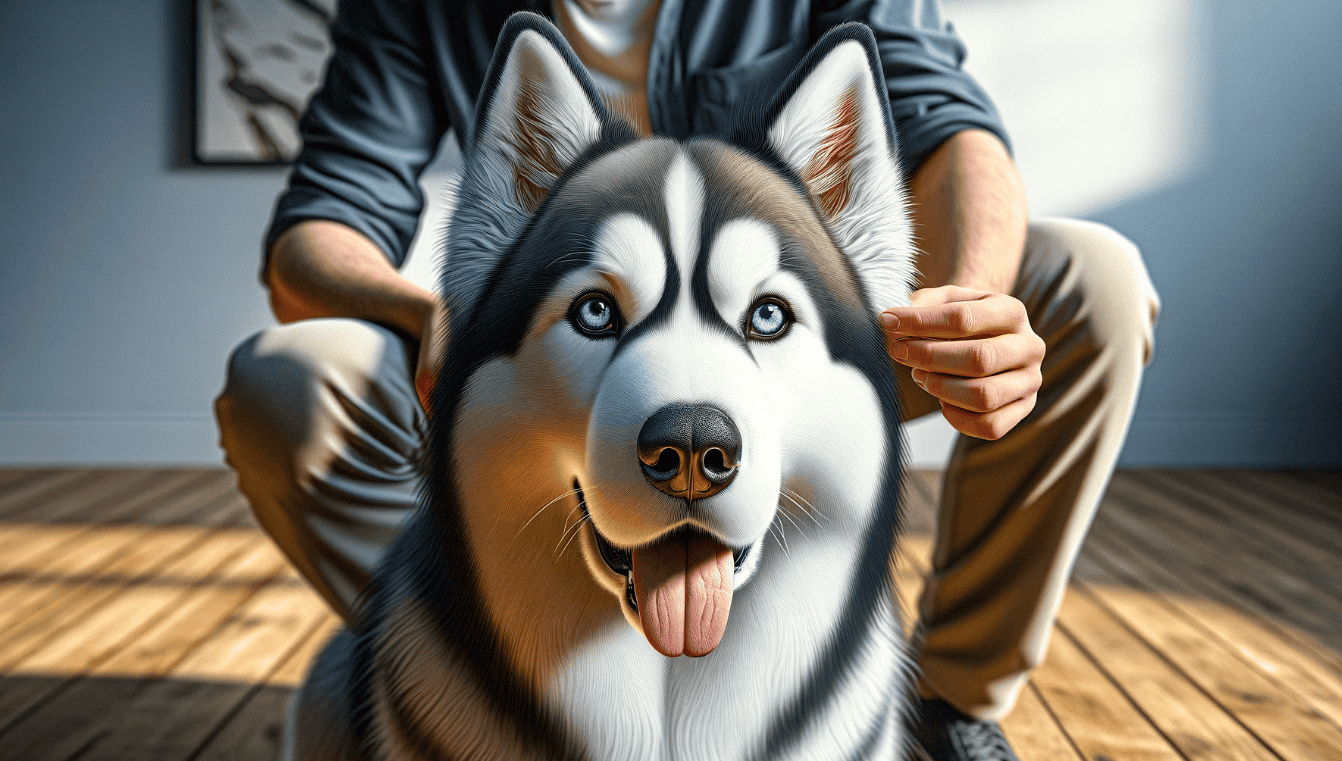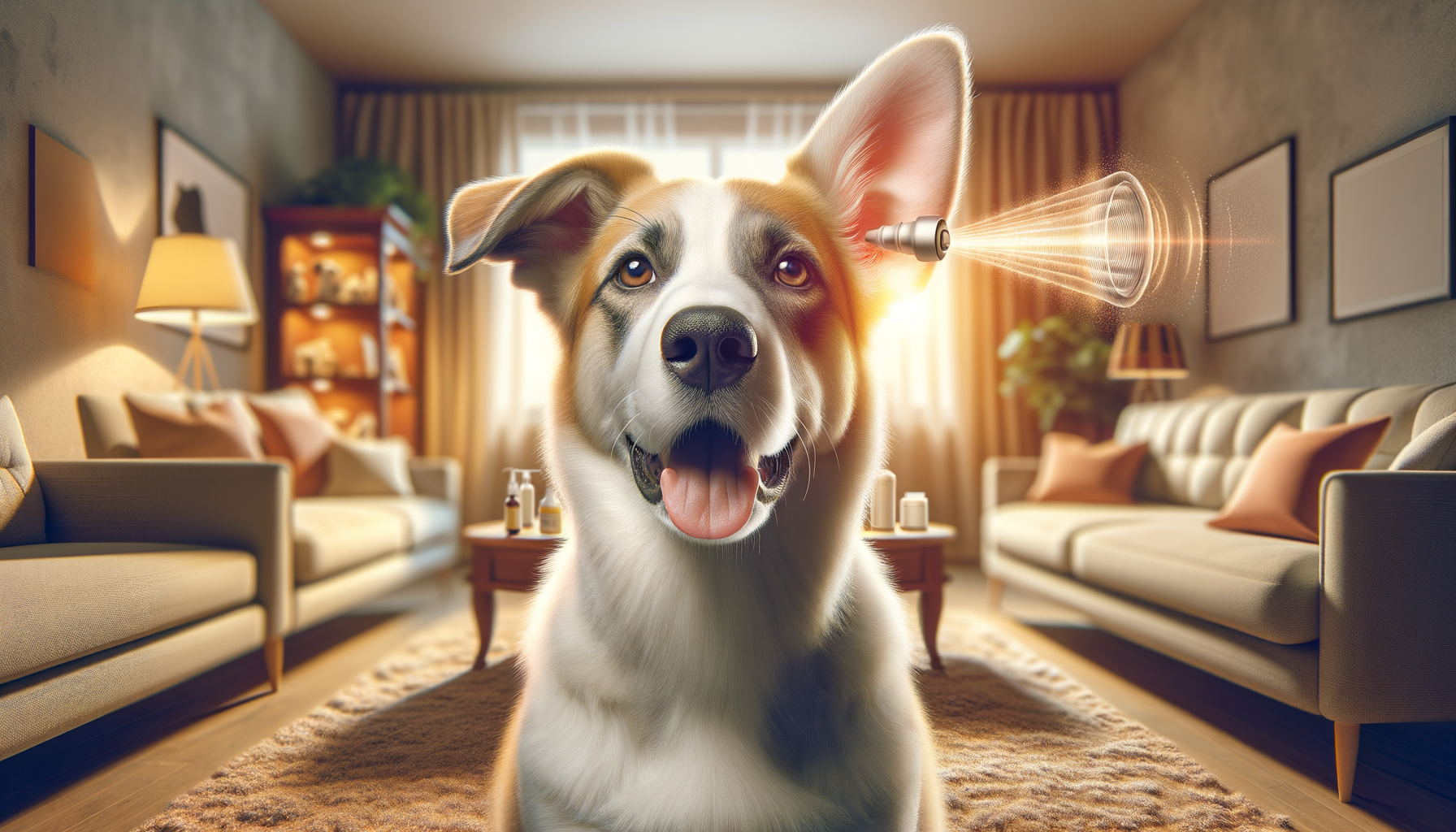As a holistic veterinarian, I’ve seen how puzzling it can be for dog parents when they notice ear wax in their furry friend’s ears. You might be wondering, “dog ear wax, what it means?” Well, you’re not alone. Ear wax in dogs is quite common and understanding it is key to ensuring your pet’s optimal health. In this article, we’re going to decode the mystery of dog ear wax and provide insights into what it could mean for your dog’s health. From identifying normal and abnormal ear wax, to understanding common related conditions and how to clean your dog’s ears properly, we’ve got it all covered. So, let’s get started on this journey to better ear health for your canine companion.

Understanding the Anatomy of a Dog’s Ear
Did you know that the structure of your dog’s ear is quite intricate and plays a significant role in their overall health? Let’s take a closer look at the anatomy of a dog’s ear and discover how ear wax is produced in our furry friends.
Inner Structure of a Dog’s Ear
The ear of a dog is composed of three parts: the outer ear, the middle ear, and the inner ear. The outer ear includes the ear flap (also known as the pinna) and the ear canal. The middle ear contains the eardrum and tiny bones that transmit sound vibrations. The inner ear is responsible for balance and hearing.
The shape of a dog’s ear canal is vertical and then turns horizontally towards the eardrum, making it more susceptible to accumulating debris and causing infections. This unique structure is one of the many reasons why understanding your dog’s ear health is so crucial.
How Dog’s Ear Wax is Produced
Ear wax, or cerumen, is a normal substance produced by the glands in the ear canal. Its primary function is to trap dirt, dust, and other foreign particles, preventing them from reaching the eardrum. The wax also provides a layer of protection against bacteria and fungi, which helps to maintain the health of the ear canal.
In dogs, the wax moves from the eardrum to the outer ear, carrying along any trapped debris. Regular grooming helps to keep this process functioning correctly. However, problems can arise if too much wax is produced, or if it doesn’t exit the ear canal as it should.
Now that we’ve explored the intricate structure of your dog’s ear and the role of ear wax, you’ll be better equipped to spot any potential ear health issues. Remember, healthy ear wax is a sign of a healthy dog, but changes in its color, consistency, or quantity could indicate a problem. As a dog parent, you hold the key to your pet’s ear health, so stay vigilant and consult a vet if you notice any changes.
Identifying Normal and Abnormal Dog Ear Wax
As a veterinarian, I often get asked about dog ear wax and what it means. It’s important to know that a certain amount of ear wax is normal and necessary for your dog’s ear health. But like everything else, too much of it can be a sign of trouble. So, let’s understand what healthy and abnormal dog ear wax looks like.
Characteristics of Healthy Dog Ear Wax
In a healthy dog, ear wax is usually light brown in color, has a minimal odor, and is present in small quantities. It plays a crucial role in trapping dirt, debris, and parasites, protecting your dog’s inner ear from infections.
- Color: Light brown
- Odor: Minimal
- Quantity: Small
If your dog’s ear checks all these boxes, rest assured, your furry friend has healthy ears!
Signs of Abnormal Dog Ear Wax
Abnormal dog ear wax, on the other hand, can be a sign of an underlying issue. It’s important to regularly check your dog’s ears for the following signs:
- Color: Dark brown, black, or yellow ear wax
- <strong>Odor: Strong, unpleasant smell
- Quantity: Excessive, often accompanied by discharge
These signs could mean your dog is suffering from an ear infection, mites, or other health problems. It’s crucial to consult your vet if you notice any of these symptoms to get the right treatment for your dog.
Remember, understanding dog ear wax and what it means is a vital part of pet care. So, keep an eye on your dog’s ears and seek veterinary advice when needed.
Common Conditions Related to Dog Ear Wax
When it comes to your furry friend’s health, it’s important to understand the common conditions related to dog ear wax. Let’s explore two prevalent issues: ear infections and ear mites.
Ear Infections in Dogs
Ear infections in dogs are a common health problem, often related to an excessive amount of ear wax. These infections can occur when bacteria or yeast overgrow in the warm, moist environment of the ear canal.
Signs of an ear infection include:
- Redness and swelling
- Unpleasant odor
- Excessive scratching or pawing at the ear
- Discharge that is brown, yellow, or bloody
It’s important to note that not all ear infections are caused by excessive wax. Other factors like allergies, injuries, or foreign bodies can also lead to infections. If your dog shows signs of an ear infection, it’s essential to seek veterinary care promptly.
Dog Ear Mites and Other Parasites
Another common issue related to dog ear wax is the presence of ear mites or other parasites. These tiny creatures thrive in the wax-filled environment of a dog’s ear. They can cause intense itching and discomfort, leading to excessive scratching and potentially, secondary infections.
Signs of ear mites include:
- Excessive shaking of the head
- Dark, coffee-ground-like discharge in the ear
- Scratches or scabs near the ear
Again, prompt veterinary care is crucial if you suspect your dog has ear mites. Treatment usually involves a thorough ear cleaning followed by medication to kill the mites.
Understanding these common conditions related to dog ear wax can help you keep a close eye on your dog’s ear health. Early detection and treatment of these issues can prevent more serious problems down the line, ensuring your dog stays happy, healthy, and comfortable.

The Impact of Excessive Dog Ear Wax
While a certain amount of ear wax is normal and necessary for your dog’s ear health, an excessive amount can lead to several health risks and behavioral changes in your furry friend.
Health Risks of Excessive Ear Wax in Dogs
Excessive ear wax in dogs can lead to a variety of health issues. It can trap dirt, debris, and parasites, creating an ideal environment for infections to thrive. If left untreated, these infections can cause severe discomfort and even permanent damage to your dog’s ear. Some of the common health risks associated with excessive ear wax include:
- Otitis Externa: This is inflammation or infection of the outer ear canal, often caused by excessive wax build-up.
- Ear Mites: These tiny parasites thrive in the wax and debris in your dog’s ear. They can cause intense itching and discomfort.
- Hearing Loss: In severe cases, excessive ear wax can lead to temporary or even permanent hearing loss.
Behavioral Changes Due to Excessive Ear Wax
Excessive ear wax can also cause noticeable changes in your dog’s behavior. If your dog is experiencing discomfort or pain due to excessive ear wax, they may exhibit symptoms such as:
- Scratching and Pawing: Dogs with excessive ear wax may frequently scratch or paw at their ears.
- Head Shaking: Your dog may shake their head in an attempt to dislodge the excess wax.
- Whining or Crying: If the ear wax build-up is causing discomfort or pain, your dog may whine or cry, especially when their ears are touched.
- Changes in Hearing: You may notice that your dog doesn’t respond to sounds as they normally would, indicating potential hearing loss.
If you notice any of these signs, it’s important to consult with your vet as soon as possible. They can help diagnose the problem and provide appropriate treatment to help your dog feel better.
Remember, understanding what your dog’s ear wax means can help you keep them healthy and happy. So, keep an eye on their ears and don’t hesitate to seek professional help if you notice anything unusual.
Cleaning your dog’s ears is an essential part of their grooming routine, but it’s not always clear when and how to do it. Let’s break down some key steps to ensure you’re doing it right.
When and How to Clean Your Dog’s Ears
Firstly, it’s important to know that cleaning your dog’s ears too often can actually cause irritation. A good rule of thumb is to clean them once a month. However, if your dog is prone to ear infections or has floppy ears, they may require more frequent cleanings. Always consult with your vet to determine the best cleaning schedule for your pooch.
When it comes to the cleaning process, start by gently lifting the ear flap to expose the ear canal. Using a dog-specific ear cleaning solution, dampen a cotton ball or gauze and gently wipe the inside of the ear. Remember, never insert anything into your dog’s ear canal. This can cause serious damage. If you notice any signs of infection, such as redness, swelling, or a foul odor, it’s time to consult your vet.
Choosing the Right Dog Ear Cleaning Products
When it comes to choosing the right cleaning products, it’s crucial to opt for items specifically designed for dogs. Human products can be too harsh for your dog’s sensitive ears. Look for a dog ear cleaning solution that’s gentle, yet effective at breaking down wax and debris. Avoid any products that contain alcohol or hydrogen peroxide, as these can cause irritation.
For the cleaning process, cotton balls or gauze work best. They’re soft, absorbent, and safe to use. Avoid using Q-tips, as they can push debris further into the ear canal and potentially cause damage.
Lastly, if your dog has a history of ear issues, your vet may recommend a specific product. Always follow your vet’s advice when it comes to your dog’s ear health.
Remember, understanding ‘dog ear wax what it means’ isn’t just about identifying potential problems, but also knowing how to maintain your dog’s ear health. Regular cleaning is an essential part of this.

When to Seek Veterinary Care for Dog Ear Wax Problems
If you’re a dog parent, it’s important to know when to seek professional help for your furry friend’s ear wax issues. While regular cleaning can help maintain your dog’s ear health, there are instances when you should consult a vet. Here are some signs to look out for:
- Change in ear wax color: Healthy dog ear wax is usually light brown. If the color changes to dark brown, black, yellow or green, it could indicate an infection or a foreign object in the ear.
- Unpleasant smell: A foul odor emanating from your dog’s ear is a clear sign of an infection.
- Excessive scratching: If your dog is constantly scratching its ear or shaking its head, it could be a sign of discomfort caused by excessive ear wax or an infection.
- Swelling or redness: Any visible inflammation in the ear is a red flag and should be checked by a vet immediately.
- Behavioral changes: If your dog seems more irritable or less active than usual, it could be due to discomfort in the ear.
Procedures and Treatments for Dog Ear Wax Issues
Once you’ve identified a potential issue with your dog’s ear wax, it’s time to consult a vet. Here’s what you can expect:
- Examination: The vet will likely start with a thorough examination of your dog’s ear. They may use a tool called an otoscope to look inside the ear canal and check for any abnormalities.
- Diagnostic tests: If the vet suspects an infection or a parasite, they may take a sample of the ear wax for lab testing.
- Medication: Depending on the cause of the problem, the vet may prescribe medication to treat the issue. This could be an antibiotic for an infection, a parasiticide for ear mites, or a corticosteroid to reduce inflammation.
- Ear cleaning: The vet may also clean your dog’s ears using a special solution. This can help remove excessive wax and any foreign objects in the ear.
- Surgery: In severe cases, your dog may require surgery. This is usually the last resort, used only when other treatments have failed or if there is a serious underlying issue such as a tumor.
Remember, your dog’s ear health is crucial for its overall well-being. So, don’t hesitate to seek professional help if you notice any changes in your dog’s ear wax. It’s always better to be safe than sorry!
Preventing Excessive Dog Ear Wax
Regular Dog Ear Care Routine
Keeping your dog’s ears clean is vital to prevent excessive wax build-up. This doesn’t mean you need to clean your dog’s ears daily. Over-cleaning can also lead to problems. Instead, aim for a regular schedule that suits your dog’s needs. This could be once a week or once a month, depending on your dog’s ear wax production.
Use a soft cloth or cotton ball to gently wipe the inside of your dog’s ear, avoiding going too deep. Always use a dog-specific ear cleaner as human products can irritate your dog’s skin.
Diet and Lifestyle Changes for Dog Ear Health
Did you know that your dog’s diet can affect their ear health? Feeding your dog a balanced, nutritious diet can help keep their ears healthy. Avoid foods that your dog is allergic to as this can lead to inflammation and increased ear wax production.
Regular exercise and grooming can also improve your dog’s overall health, including their ears. Grooming helps to remove any dirt or debris that could get trapped in your dog’s ears, leading to excessive wax.
Remember, every dog is unique, so what works for one might not work for another. It’s always best to consult with your vet to create an ear care routine that suits your dog’s individual needs.
Decoding Dog Ear Wax: Health Insights – A Conclusion
Understanding your dog’s ear wax is more than just a cleanliness issue; it’s a window into their health. By adopting a regular ear care routine and making necessary diet and lifestyle changes, you can help ensure your dog’s ears remain healthy. If you notice any changes in your dog’s ear wax or behavior, don’t hesitate to seek professional care. After all, our furry friends rely on us to keep them healthy and happy. So let’s make ear health a priority!
Note: This information is not a substitute for professional veterinary advice. Always consult with your vet for any concerns about your dog’s health.
Frequently Asked Questions
1. What can dog ear wax tell us about their health?
Ear wax in dogs can provide insights into their overall health. Changes in color, consistency, or volume can indicate underlying health issues such as infections, allergies, or even more serious conditions.
2. How often should I check my dog’s ears for wax?
It’s recommended to check your dog’s ears at least once a week. Regular checks can help you catch any changes early and seek veterinary care if needed.
3. What does it mean if my dog’s ear wax is a different color or consistency?
Changes in color or consistency of your dog’s ear wax could indicate a health problem. For instance, black or brown wax could suggest a yeast infection, while a bloody or pus-like discharge could indicate a bacterial infection.
4. Can I clean my dog’s ears at home?
Yes, you can clean your dog’s ears at home using a vet-approved ear cleaner. However, it’s important to be gentle and not to insert anything into the ear canal, as this could cause damage.
5. When should I seek veterinary care for my dog’s ear wax?
If you notice changes in your dog’s ear wax, such as a different color or consistency, or if your dog seems to be in pain, it’s best to seek veterinary care. Your vet can diagnose any underlying issues and provide appropriate treatment.
